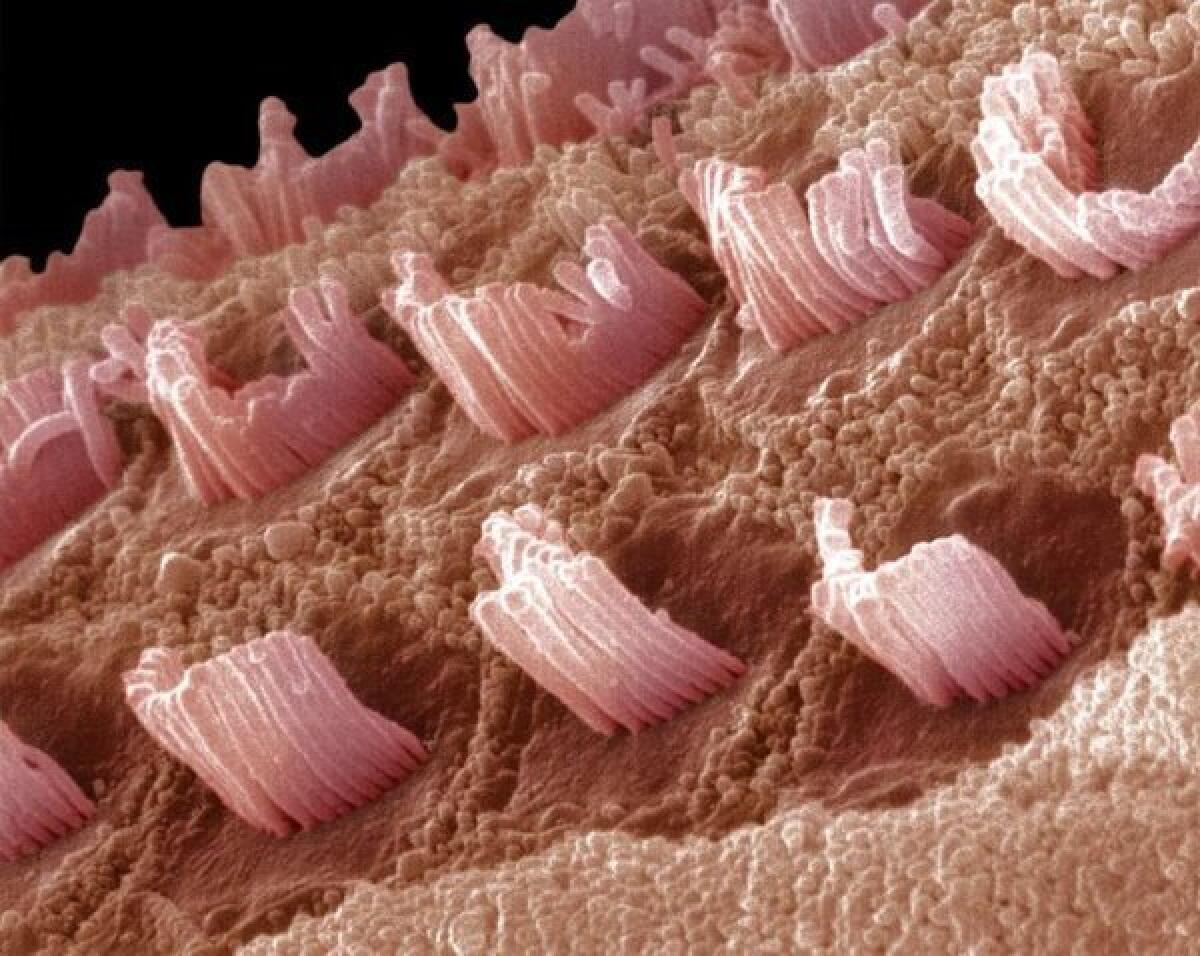Inner ear’s energy can work like a battery, scientists say

- Share via
MIT and Harvard scientists have figured out a way to harness a tiny electric current in the inner ear.
The work, believed to be the first to pull electricity from the cochlea and use it to drive electronics, could make it possible some day to make self-powered implantable medical devices to diagnose and treat disorders of the ear or even the brain, the researchers wrote last week in the journal Nature Biotechnology.
Anantha Chandrakasan of the MIT Microsystem Technology Laboratories in Cambridge, Mass., and Konstantina Stankovich of the Massachusetts Eye and Ear Infirmary in Bostonand colleagues took advantage of the ear’s own way of powering hearing -- a battery-like feature known as the endocochlear potential, which is created because of differences in the number of potassium ions (charged atoms) on either side of a membrane deep in the inner ear. The endocochlear potential helps take vibrations generated from sound waves and translates them into signals to the brain’s auditory nerve. The brain then processes those signals into meaningful sounds.
To capture the electricity, the team implanted electrodes in the cochleas of anesthetized Hartley Albino guinea pigs that were attached to a miniature power-harvesting chip located outside the animals’ bodies.
The current generated by the guinea pigs’ inner earswas not strong enough to power up the devices. But once scientists applied a jolt to the devices wirelessly, they found that the electricity from the animals’ endocochlear potential was sufficient to power collection of information about the electricity in the inner ear -- and transmit those measurements wirelessly to another device every 40 seconds to 12 minutes, over a period of up to five hours.
The researchers wrote that the devices could be very useful in research, allowing scientists to implant sensing devices in the inner ear and also in other nearby structures such as the temporal lobe of the brain, the facial nerve, or the carotid artery.
Eventually, treatment devices powered by the inner ear, such as cochlear implants for people, might also become possible, they added.
For more information about hearing, visit the National Institute on Deafness and Other Communication Disorders of the National Institutes of Health.



